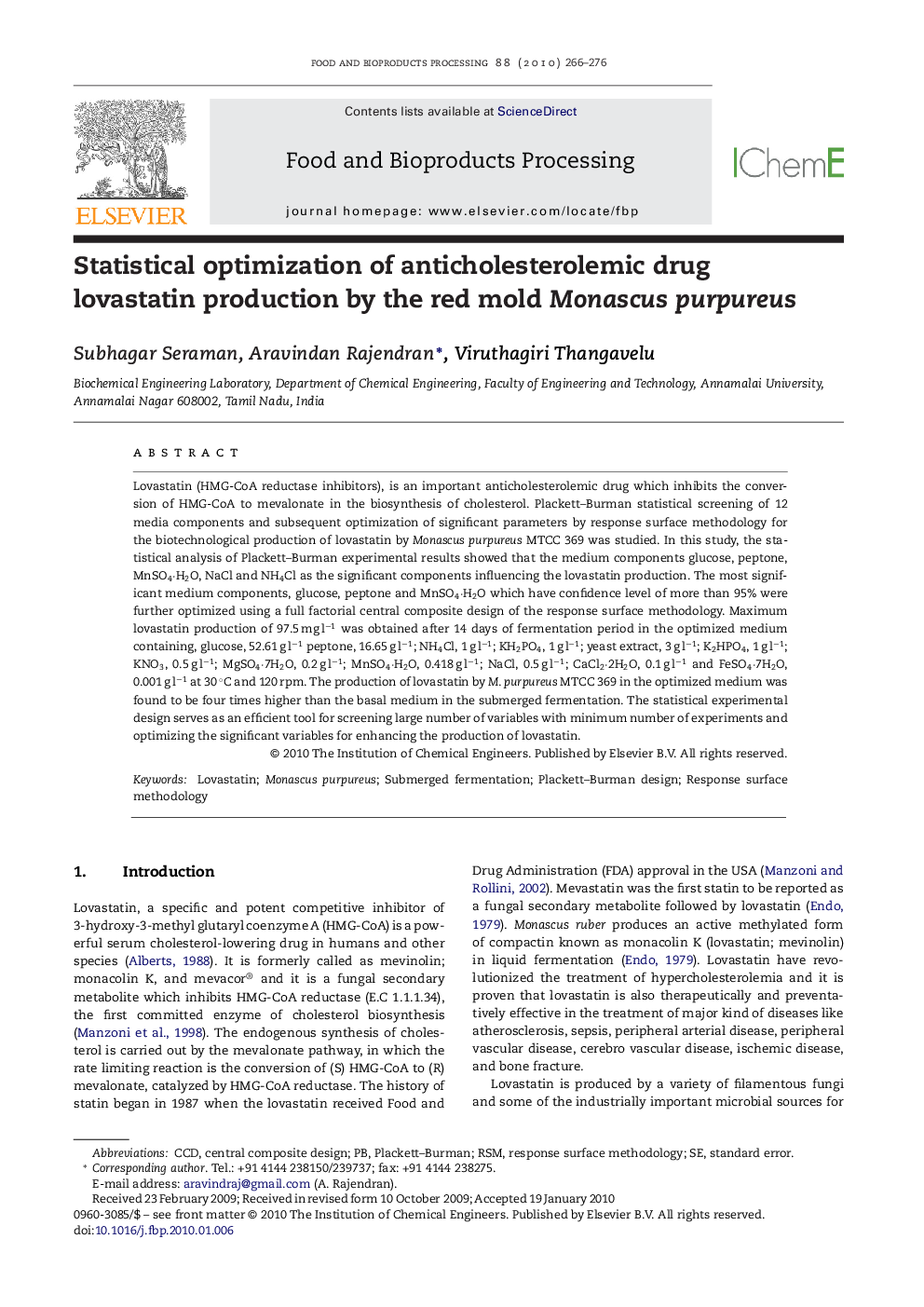| Article ID | Journal | Published Year | Pages | File Type |
|---|---|---|---|---|
| 19546 | Food and Bioproducts Processing | 2010 | 11 Pages |
Lovastatin (HMG-CoA reductase inhibitors), is an important anticholesterolemic drug which inhibits the conversion of HMG-CoA to mevalonate in the biosynthesis of cholesterol. Plackett–Burman statistical screening of 12 media components and subsequent optimization of significant parameters by response surface methodology for the biotechnological production of lovastatin by Monascus purpureus MTCC 369 was studied. In this study, the statistical analysis of Plackett–Burman experimental results showed that the medium components glucose, peptone, MnSO4·H2O, NaCl and NH4Cl as the significant components influencing the lovastatin production. The most significant medium components, glucose, peptone and MnSO4·H2O which have confidence level of more than 95% were further optimized using a full factorial central composite design of the response surface methodology. Maximum lovastatin production of 97.5 mg l−1 was obtained after 14 days of fermentation period in the optimized medium containing, glucose, 52.61 g l−1 peptone, 16.65 g l−1; NH4Cl, 1 g l−1; KH2PO4, 1 g l−1; yeast extract, 3 g l−1; K2HPO4, 1 g l−1; KNO3, 0.5 g l−1; MgSO4·7H2O, 0.2 g l−1; MnSO4·H2O, 0.418 g l−1; NaCl, 0.5 g l−1; CaCl2·2H2O, 0.1 g l−1 and FeSO4·7H2O, 0.001 g l−1 at 30 °C and 120 rpm. The production of lovastatin by M. purpureus MTCC 369 in the optimized medium was found to be four times higher than the basal medium in the submerged fermentation. The statistical experimental design serves as an efficient tool for screening large number of variables with minimum number of experiments and optimizing the significant variables for enhancing the production of lovastatin.
